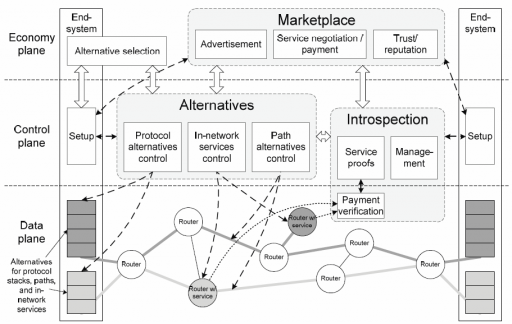Designing a new Internet with more choices
August 10, 2012
A team of researchers from four U.S. universities is poised to lay out the key components for a networking architecture to serve as the backbone of a new Internet that gives users more choices about which services they use.
The National Science Foundation (NSF) asked the researchers to design a blueprint for a future version of the Internet.
Making choices
The new Internet architecture will hinge on users being able to make choices about which features and services they want to use, and which entities they want to pay to provide those services. As such, the work being done under the NSF grant is guided by three principles:
1). Encourage Alternatives: Any new network must be able to provide different types of services, allowing users to select the service that best meets their needs.
2). Vote With Your Wallet: Any new network must allow users to reward service providers that offer superior and/or innovative services. This will encourage innovation and discourage inferior service.
3). Know What Happened: Any new network must be able to give users and service providers the ability to exchange information about the quality of the service being provided.
This poses a significant challenge, because the current Internet is unable to support the features and mechanisms to implement these three principles.
However, you have to start somewhere. In their short paper, the researchers say that a good first step will be to support the development of alternative services — “including the ability to create alternatives and select among them.”
Researchers on the team come from NC State, UMASS, the University of Kentucky and the University of North Carolina at Chapel Hill.
The short paper, “Choice as a Principle in Network Architecture,” will be presented at the ACM SIGCOMM 2012 conference in Helsinki, Finland, Aug. 13-17. The work will be presented by Tilman Wolf of UMASS Amherst, who is lead author.

